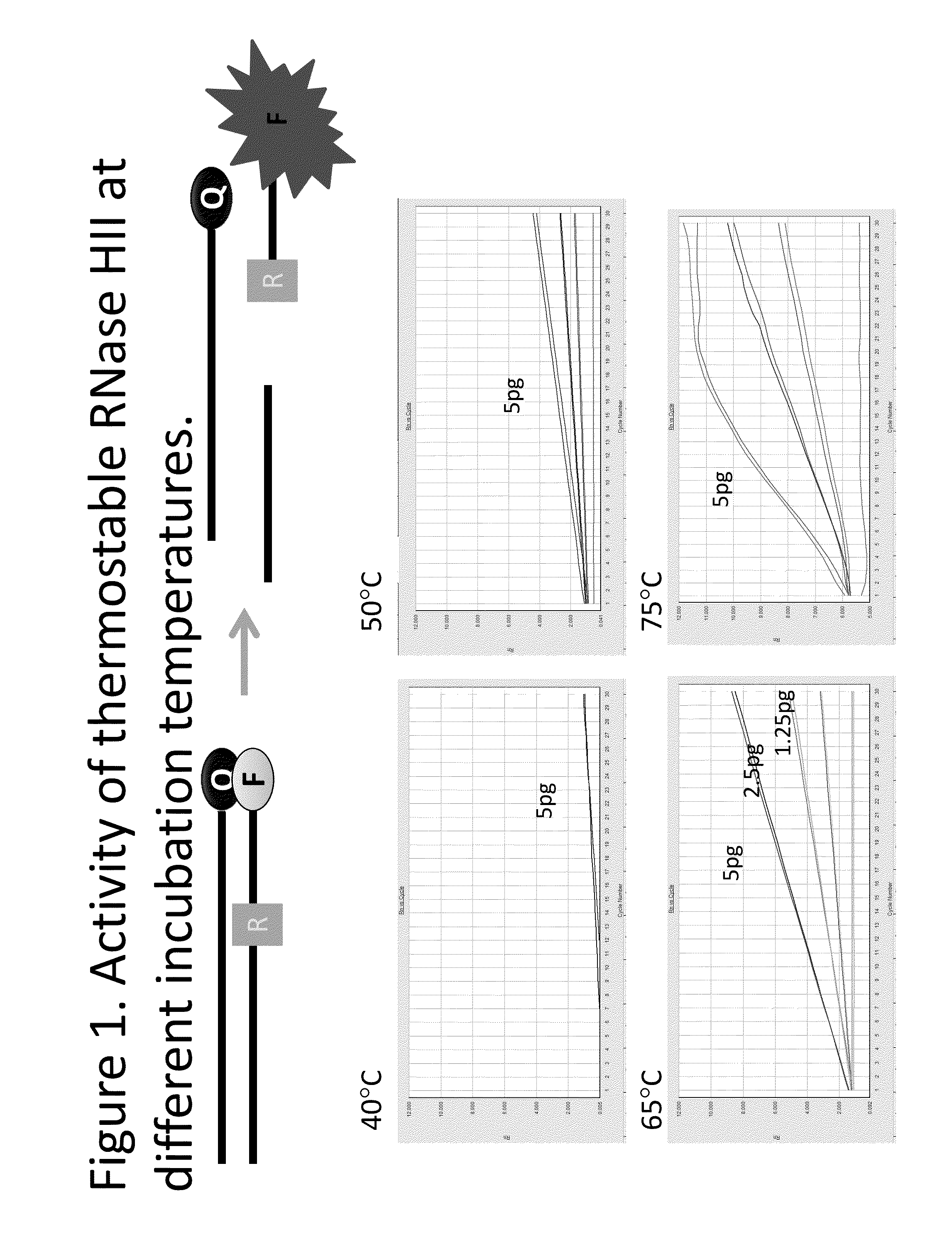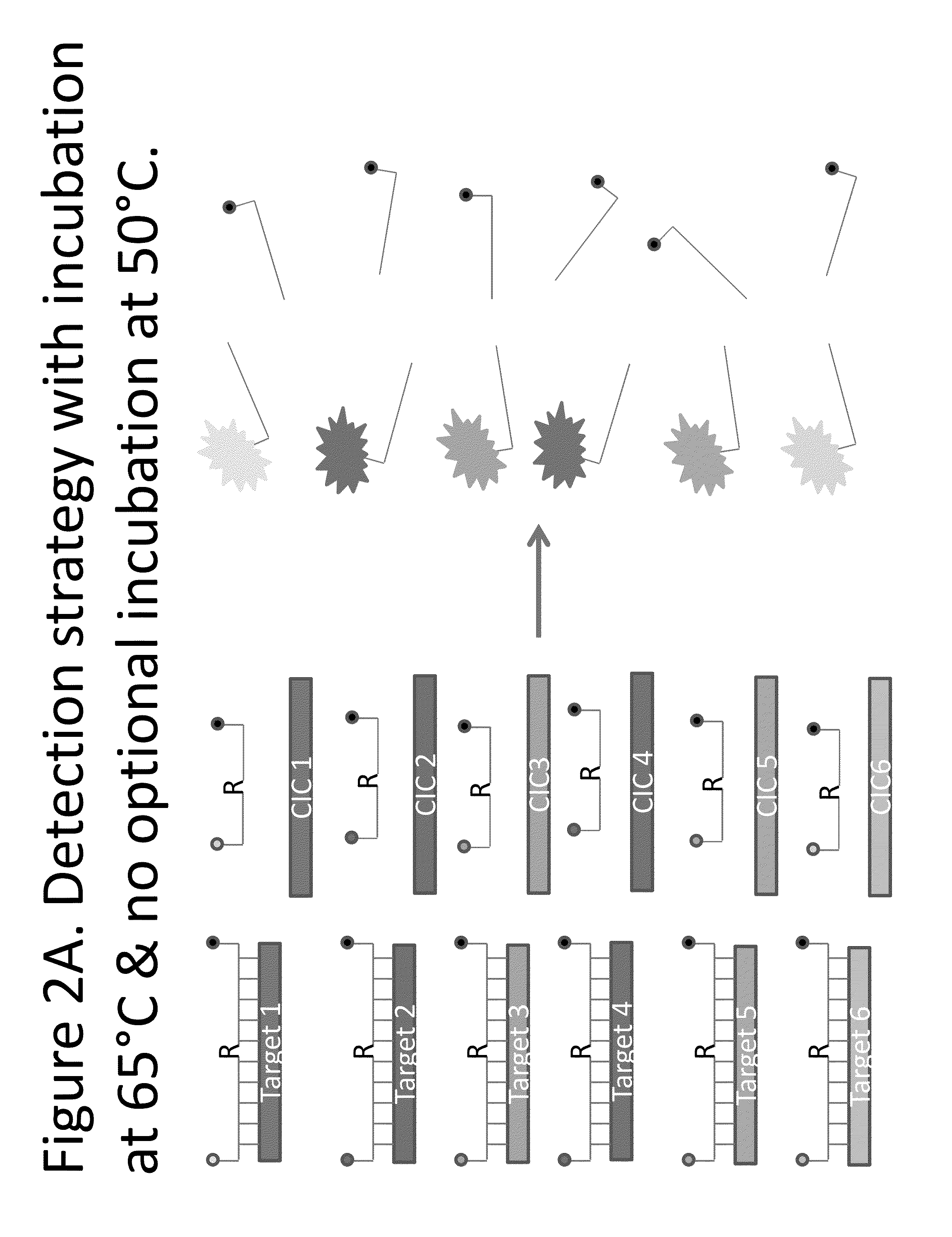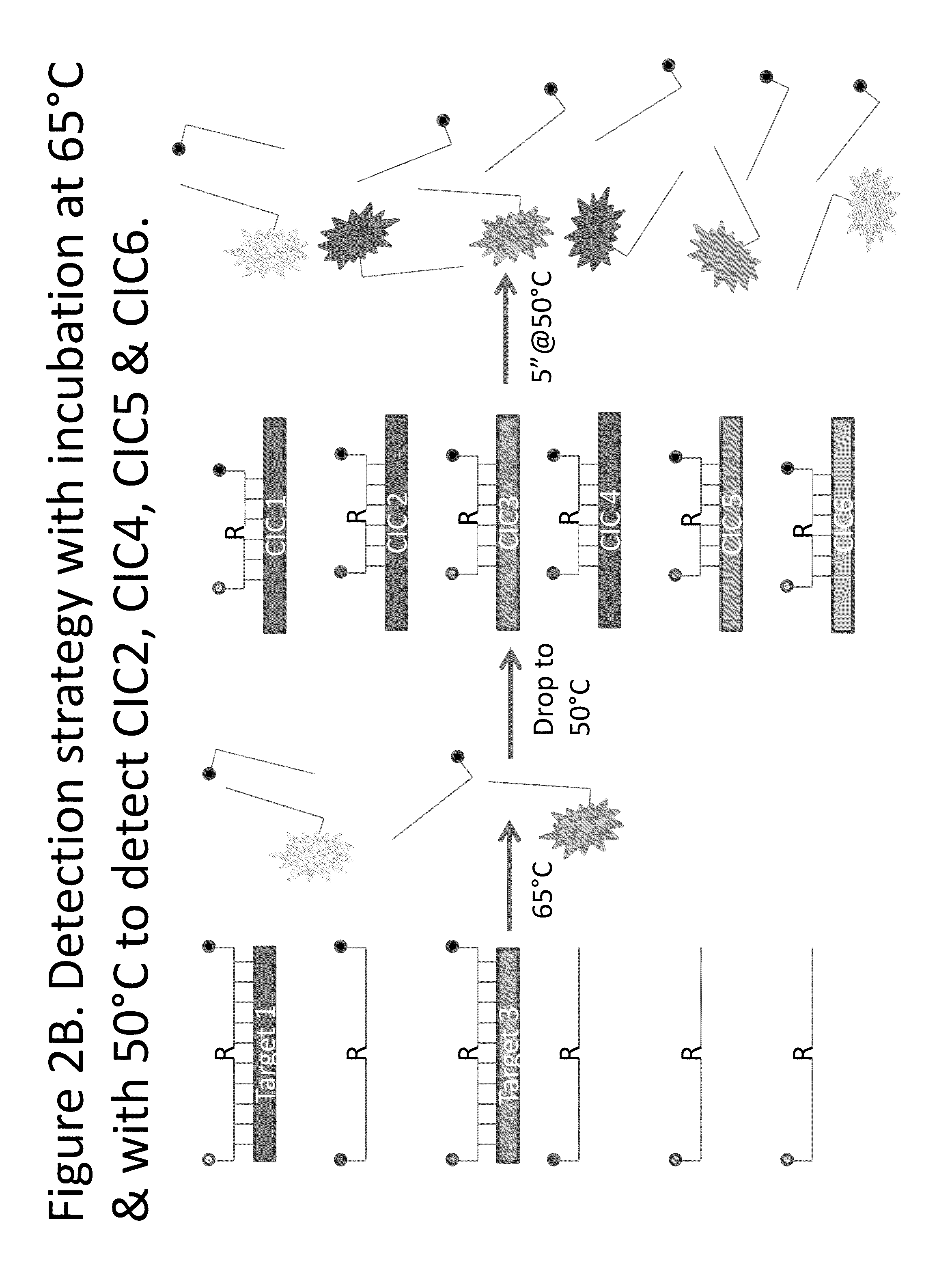Step-wise detection of multiple target sequences in isothermal nucleic acid amplification reactions
a nucleic acid amplification and target sequence technology, applied in the field of nuclear acid amplification chemistry, can solve the problems of insufficient probe turnover technology, high cost of specialized equipment, and inability to accurately detect the nucleic acid amplification signal, so as to achieve the effect of reducing cost and cos
- Summary
- Abstract
- Description
- Claims
- Application Information
AI Technical Summary
Benefits of technology
Problems solved by technology
Method used
Image
Examples
example 1
Determination of the Activity of Thermostable RNAse HII at Different Incubation Temperatures
[0030]A double stranded template was generated using the oligonucleotides: H2-T1: 5′-CGC CTC CCA TCT CCT GCA TCA CCT CAC GAG-BHQ—1-3′ (SEQ ID NO:1) and H2-P1: 5′-FAM-CTC GTG AG rG TGA TGC AGG AGA TGG GAG GCG-3′ (SEQ ID NO:2; where “rG” is the ribonucleotide moiety in the sequence). The 2 oligonucleotides were mixed in 1:1 molar ratio, incubated at 95° C. for 10 minutes, and cooled down to room temperature to form double stranded DNA substrates for the thermostable RNAse HII activity assays.
[0031]Assays for estimating the specific activity of RNAseHII used 50 μL reactions containing:[0032]120 nM dsDNA substrate[0033]5 μL Rnase HII (serial dilutions)[0034]1×ROX[0035]20 mM Tris-HCl[0036]10 mM (NH4)2SO4[0037]10 mM KCl[0038]2 mM MgSO4[0039]0.1% Triton X-100[0040]pH 8.8 at 25° C.
[0041]The reactions were incubated at 40° C., 50° C., 65° C., or 75° C. for 30 minutes and fluorescence signals were read...
example 2
Detection of HSV-1 and HSV-2 along with the HSV Competitive Internal Control Template
[0042]The primers for the amplification of HSV are identical to those reported in Kim et al. Journal of Clinical Virology 50(1): 26-30 (2010). The probes for the IsoGlow™ HSV typing assay are listed in Table 1. These probes were designed with a Tm around 65° C., therefore, allowing them to bind to the corresponding complementary sequence efficiently at 64° C., and to be cleaved by RNAse HII during the amplification of HSV DNA. Because of the presence of two polymorphisms between HSV-1 and HSV-2 in the probe binding regions (underlined in Table 1), these probes are subtype-specific. As the probes are labeled with different reporter groups, each HSV type can be detected using a different fluorescence channel. The HSV CIC probe used to detect the HSV CIC is also listed in Table 1. The HSV CIC has the same primer binding sequence as HSV-1 and HSV-2 such that it is amplified by the primers reported in Ki...
PUM
| Property | Measurement | Unit |
|---|---|---|
| Temperature | aaaaa | aaaaa |
| Fluorescence | aaaaa | aaaaa |
| Thermal stability | aaaaa | aaaaa |
Abstract
Description
Claims
Application Information
 Login to View More
Login to View More - R&D
- Intellectual Property
- Life Sciences
- Materials
- Tech Scout
- Unparalleled Data Quality
- Higher Quality Content
- 60% Fewer Hallucinations
Browse by: Latest US Patents, China's latest patents, Technical Efficacy Thesaurus, Application Domain, Technology Topic, Popular Technical Reports.
© 2025 PatSnap. All rights reserved.Legal|Privacy policy|Modern Slavery Act Transparency Statement|Sitemap|About US| Contact US: help@patsnap.com



